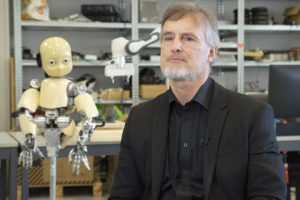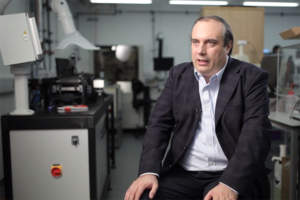Deep Feedforward Neural Networks
AI specialist Jürgen Schmidhuber on the first deep networks, backpropagation and whether you can train a netwo...
What marketing strategy of Apple allows it to stay in business? How to achieve mutual understanding between managers and engineers? Assistant Teaching Professor at Carnegie Mellon University Matthew Bass speaks on how to design a product that will be successful in the market.
If you have a working cellphone, the only reason you’re going to buy another cell phone is because it’s new and innovative, it has the coolest latest features, maybe the battery life is better, maybe the screen size’s larger, in some other way the hardware is more capable than the previous phone. And if you’re an organization that will release the newest and latest phone, then you can charge a premium for it. So think about Apple: every time Apple comes out with a new iPhone, they’re very expensive. And they’re very expensive for some period of time and in one way or another competitive products come to the market and then the price starts to drop. And so Apple and other companies like that are only going to stay in business, if they can produce lots of products that are innovative and that will beat their competitors to the market with comparable features.
Let’s say, you are a mobile carrier, so you provide service for mobile users. If that’s the case that you drop calls, you’re going to upset your customer base. But your customer base will tolerate some amount of continuity of service. So if you drop 2 calls per 100 it’ll be okay, they won’t go and change service. If you start to drop 3 calls per 100 then maybe they’ll start to change services and go to competitor. That sort of market analysis is needed in order to be able to provide the correct kinds of requirements, to be able to design a system to support the needs.
The product managers and the marketing people often look at features that they need. They might look at some other capability, like battery life and so forth, but they don’t understand how to articulate that or communicate that to the engineers. The engineers also tend to look at functionality, they don’t necessarily understand how to think about the structure of their system, how to think about the properties that are supported and inhibited and what the relationship is between those properties and the needs of the business. And so what we need is some recognition on both sides, that there are mutual dependencies between the decisions that you make in the business-hand side and the kinds of decisions that you make from an engineering perspective.

AI specialist Jürgen Schmidhuber on the first deep networks, backpropagation and whether you can train a netwo...

Nanotechnologist Andrea Ferrari on the perpendicular recording, diamond-like carbon, and magnetic storage

Researchers create a multifunctional sensor that can 'heal' itself after being cut